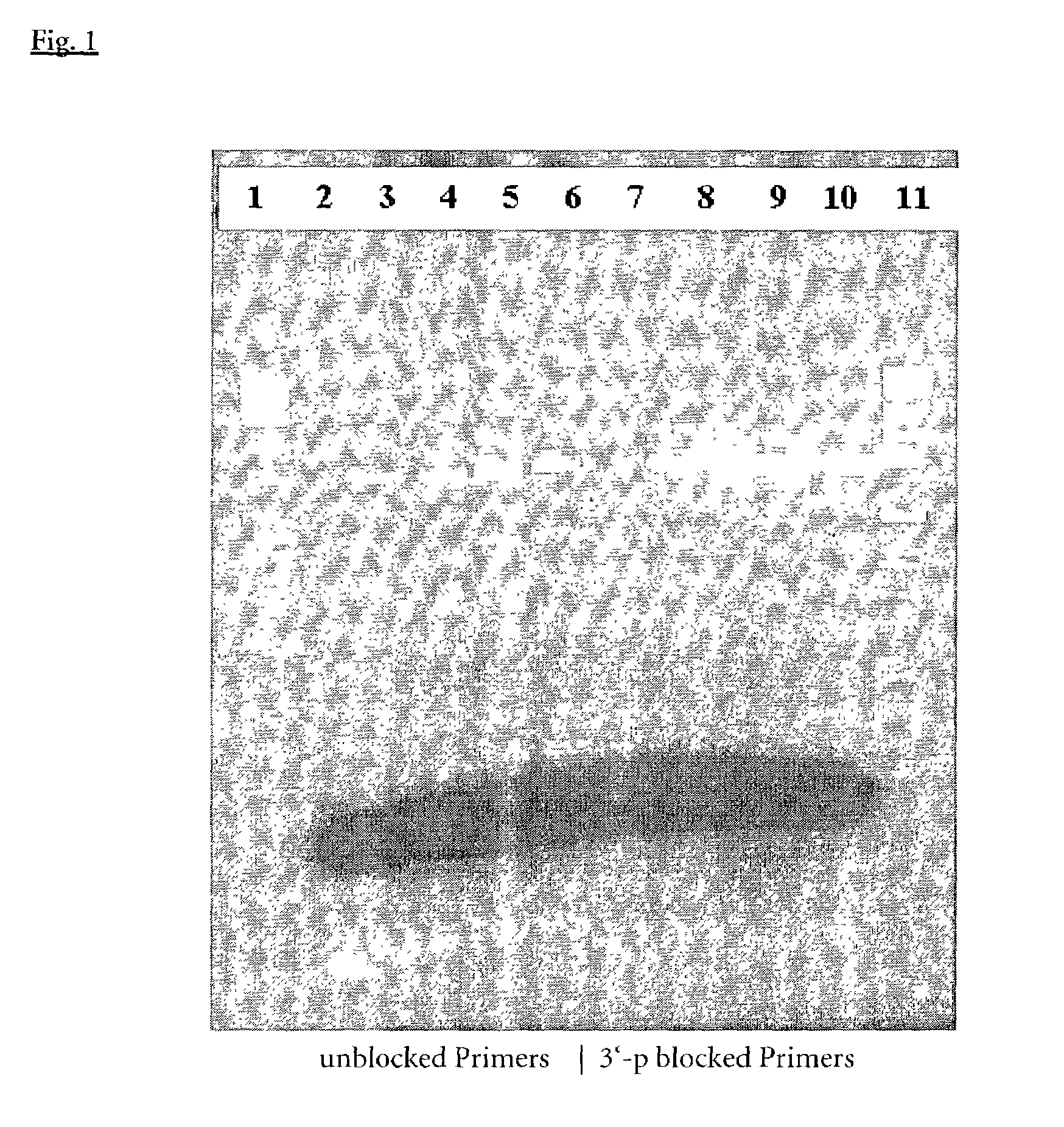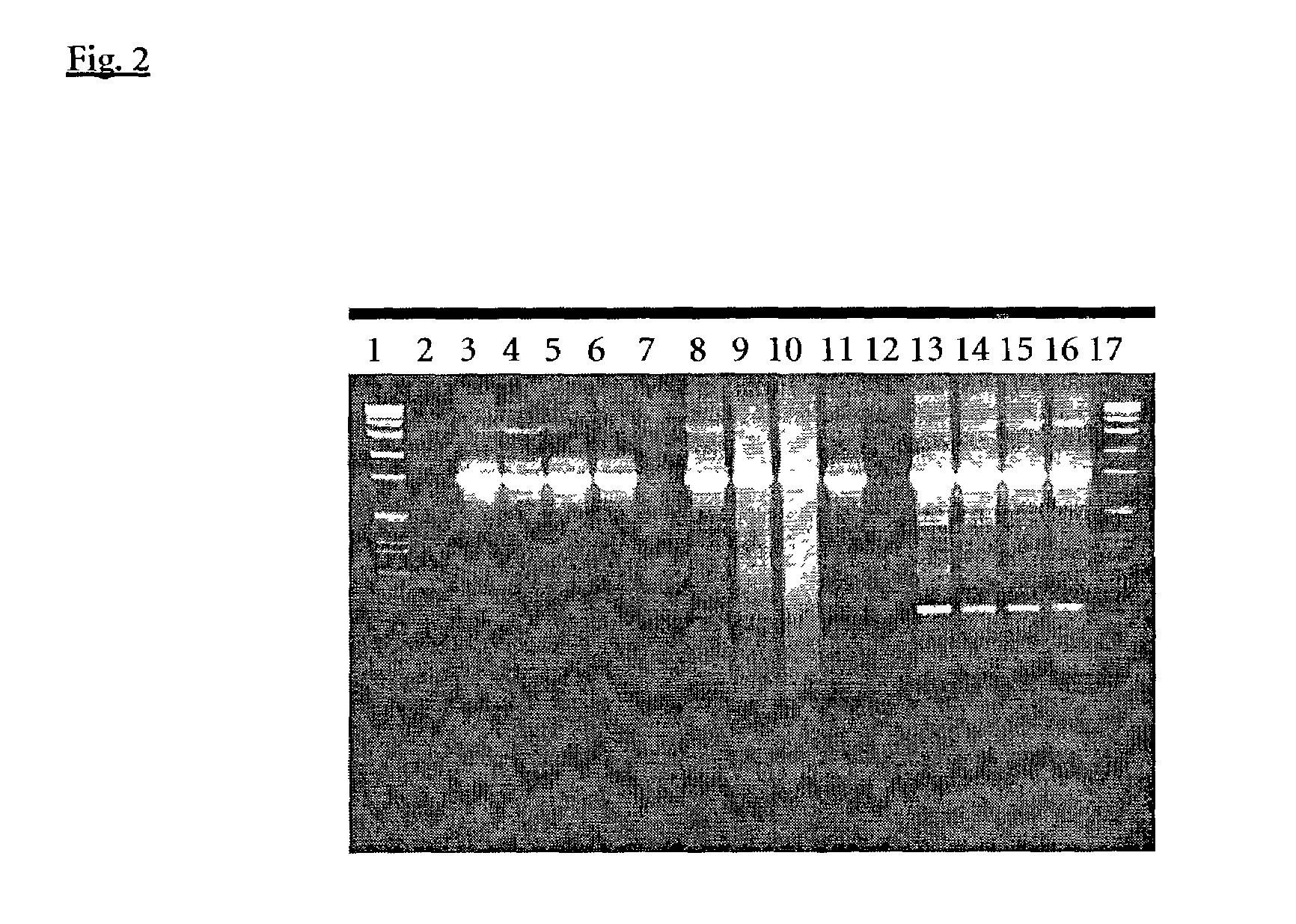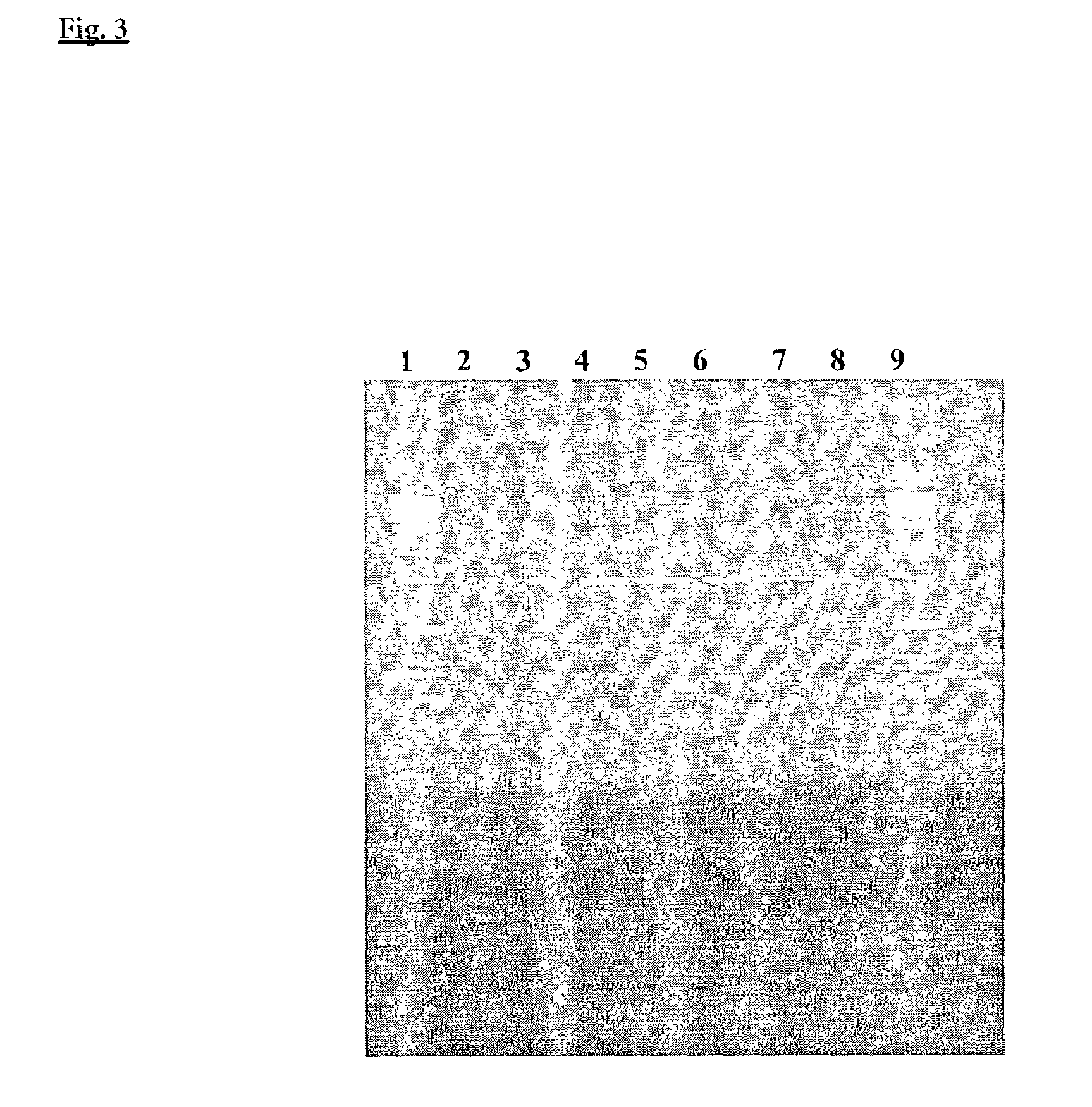Composition and method for hot start nucleic acid amplification
a nucleic acid and amplification technology, applied in the field of composition and method of hot-start nucleic acid amplification, can solve the problems of false positive, difficult cloning of amplified genes, undesirable use in certain applications, etc., and achieve the effect of increasing nuclease resistance and easy selection of different modifications
- Summary
- Abstract
- Description
- Claims
- Application Information
AI Technical Summary
Benefits of technology
Problems solved by technology
Method used
Image
Examples
example 1
Oligonucleotide Synthesis
[0130]For oligonucleotide synthesis, the following reagents were used:[0131]LightCycler Red 640 NHS ester (Roche Molecular Biochemicals cat no. 2015161)[0132]LightCycler Fluorescein CPG (Roche Molecular Biochemicals cat no. 3138178)[0133]3′ phosphate CPG (Glen Research Cat No. 20-2900-xx)[0134]C3 propyl spacer (Glen Research Cat No 10-1913-xx-)[0135]2′ OMe-G phosphoramidite (Glen Research Cat No 10-3121-xx)[0136]2′ OMe-C-phosphoramidite (Glen Research Cat No 10-3110-xx)[0137]2′ OMe-U-phosphoramidite (Glen Research Cat No 10-3130-xx)[0138]2′ 3′ dideoxy C CPG (Glen Research Cat No. 20-2017-xx)
[0139]Oligonucletide synthesis was performed according to standard protocols on a DNA synthesis machine (Applied Biosystens model ABI 394-08) Synthesis scale was 1.0 μmol. Solid supports were purchased from GlenResearch in prefilled columns or filled in empty synthesis columns (Glen Research cat no. 20-0030-00) and the columns were adapted to the corresponding synthesizer...
example 2
Exo-Start-PCR Induction with 3′-P-blocked Primers, Afu-Exonuclease III and Taq DNA Polymerase
[0142]PCR was performed to amplify a 2763 bp fragment from the human p53 gene using either unmodified primers according to Seq. Id. No. 1 and 2 or 3′-Phosphate-blocked primers according to Seq.Id. No. 1 and 2. Introduction of the Phosphate modification was achieved as known in the art according to example 1. PCR reactions were set up with 2.5 Units Taq DNA Polymerase (ROCHE Molecular Biochemicals, No. 1435094), without and with addition of 38 to 152 ng A. fulgidus exodeoxyribonuclease III (EP-A-1088891) 200 ng of human genomicDNA (ROCHE Molecular Biochemicals, No. 1691112), 0.4 μM each of the above mentioned primers, 200 μM dNTP's (ROCHE Molecular Biochemicals, No.1969064), 1.5 mM MgCl2, 50 mM Tris-HCl, pH 8,9 (25° C.) and 22 mM (NH4)2SO4a 50 μl final reaction volume.
[0143]PCR amplifications were performed under standard conditions:
[0144]94∘C.for2min.(1cycle)94∘C.for10sec....
example 3
Replacement of Taq Polymerase by Other Type I Polymerases in the ExoIII Induction Step PCR
[0147]PCR was performed with the same primers blocked at the 3′ end with a phosphate group and final concentrations as described in example 1. ROCHE Taq polymerase in this experiment was compared with AdvanTaq™ (Clontech, No. 8432-1) an N-terminal deletion mutant of Taq polymerase and KlenTaq1™ (Ab Peptides, Inc., No. 1001) another N-terminal deletion mutant of Taq polymerase. The PCR mixture components for ROCHE Taq were as described in example 1. Reaction with the other two polymerases were set up with the special shipped reaction buffers and the recommended enzyme volumes without and with addition of 20 to 50 ng A. fulgidus exodeoxyribonuclease III.
[0148]PCR amplifications (50 μl) were performed under standard conditions:
[0149]94∘C.for2min.(1cycle)94∘C.for10sec.55∘C.for30sec.68∘C.for4min.}(35cycles)68∘C.for7min.(1cycle)
[0150]All reactions wer...
PUM
| Property | Measurement | Unit |
|---|---|---|
| temperatures | aaaaa | aaaaa |
| temperatures | aaaaa | aaaaa |
| temperature | aaaaa | aaaaa |
Abstract
Description
Claims
Application Information
 Login to View More
Login to View More - R&D
- Intellectual Property
- Life Sciences
- Materials
- Tech Scout
- Unparalleled Data Quality
- Higher Quality Content
- 60% Fewer Hallucinations
Browse by: Latest US Patents, China's latest patents, Technical Efficacy Thesaurus, Application Domain, Technology Topic, Popular Technical Reports.
© 2025 PatSnap. All rights reserved.Legal|Privacy policy|Modern Slavery Act Transparency Statement|Sitemap|About US| Contact US: help@patsnap.com



